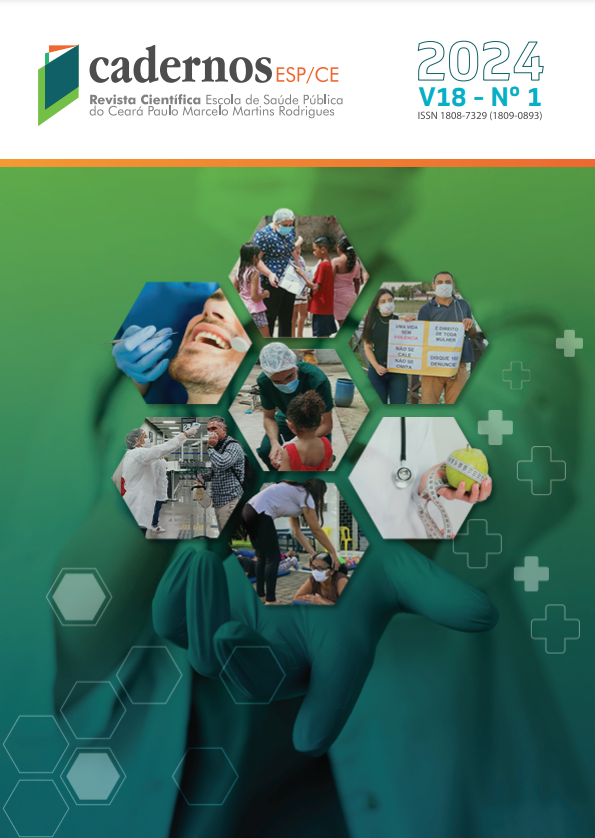EDUCATIONAL ACTIVITY ON MENSTRUAL POVERTY
EXPERIENCE REPORT
DOI:
https://doi.org/10.54620/cadesp.v18i1.1921Keywords:
Menstruation; Women; Vulnerable PopulationsAbstract
To share the experience of an educational activity on menstrual poverty in the school environment. Experience report developed by professionals from the Multiprofessional Residency in Family and Community Health in the municipality of Horizonte - Ceará, in the period of June 2023, targeting children and adolescents aged 11 to 14, enrolled in an elementary school. For the systematization, we used the method developed by Oscar Holliday, the proposal in five stages. The educational activity brought up an important debate on menstrual care, and also served as a basis for the students to be future multipliers of the discussion on menstrual poverty. It was observed that menstrual poverty is still permeated by taboos, a situation that is reflected in the scarcity of databases, public policies and actions aimed at promoting intimate dignity.
Downloads
References
UNICEF; UNFPA. Pobreza Menstrual no Brasil: Desigualdades e Violações de Direitos. UNICEF; 2021. [acesso 2023 Jul 20]. Disponível em: https://www.unicef.org/brazil/media/14456/file/dignidade-menstrual_relatorio-unicef-unfpa_maio2021.pdf
Un Women. Infographic: End the stigma. Period [Internet]. New York: Un Women; 2019. [acesso 2023 Jul 20]. Disponível em: https://www.unwomen.org/en/digital-library/multimedia/2019/10/infographic-periods.
Espro. Pesquisa revela que a pobreza menstrual atinge 47% das jovens negras e de famílias de menor renda no país [Internet]. São Paulo: Espro; 2022. [acesso 2023 Aug 23]. Disponível em: https://www.espro.org.br/pesquisa-pobreza-menstrual/.
Minayo MCS. Organizadora. Pesquisa social: teoria, método e criatividade. 19. ed. Petrópolis: Vozes; 2009. 110 p.
Gil AC. Como elaborar projetos de pesquisa. 4. ed. São Paulo: Atlas; 2002. 175 p.
Holliday OJ. Para sistematizar experiências. Tradução de Resende MVV. 2. ed. Brasília: MMA; 2006. 128 p.
Bahia L. Livre para menstruar: pobreza menstrual e a educação de meninas. São Paulo: Girl Up, Herself Educaconal; 2021. [acesso 2023 Sep 13] Disponível em: https://movimentomulher360.com.br/wp- content/uploads/2021/10/LivreParaMenstruar-Pobreza-menstrual-e-a-educac%CC%A7a%CC%83o-de-meninas.pdf
IBGE. Coordenação de População e Indicadores Sociais. Pesquisa Nacional da Saúde do Escolar: 2015.Rio de Janeiro: IBGE; 2016. 132 p. [acesso 2023 Sep 13] Disponível em: https://biblioteca.ibge.gov.br/visualizacao/livros/liv97870.pdf. Acesso em 15 out. 2023.
Ansari A, Gottfried MA. The Grade-Level and Cumulative Outcomes of Absenteeism. Child Dev. 2021;92(4):e548-64. DOI: https://doi.org/10.1111/cdev.13555. DOI: https://doi.org/10.1111/cdev.13555
BRASIL. Decreto nº 6286, de 5 de dezembro de 2007. Institui o Programa Saúde na Escola -PSE, e dá outras providências. Diário Oficial, Brasília, DF, 05 dez. 2007.
Downloads
Published
How to Cite
Conference Proceedings Volume
Section
Categories
License
Copyright (c) 2024 Cadernos ESP

This work is licensed under a Creative Commons Attribution 4.0 International License.
Accepted 2024-03-20
Published 2024-07-23






















